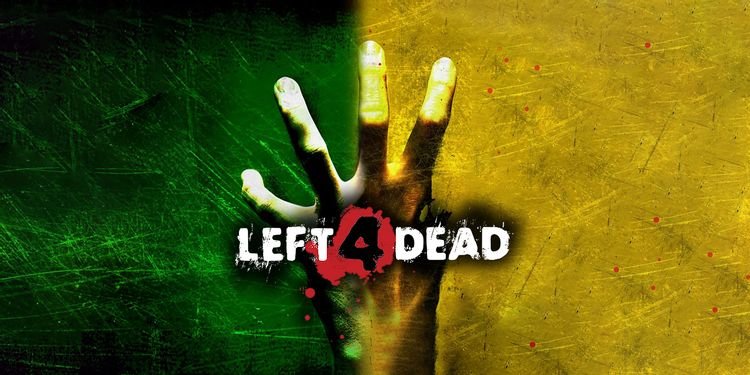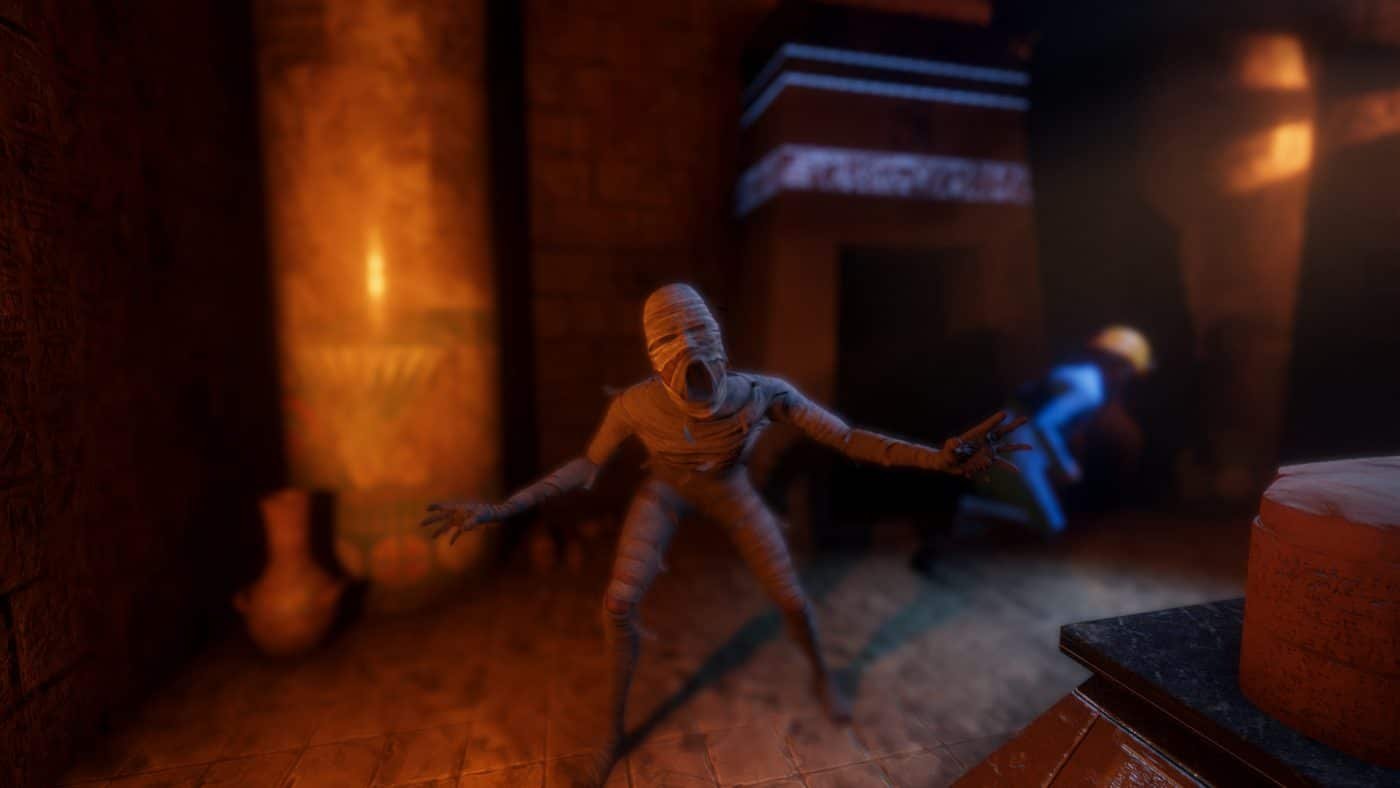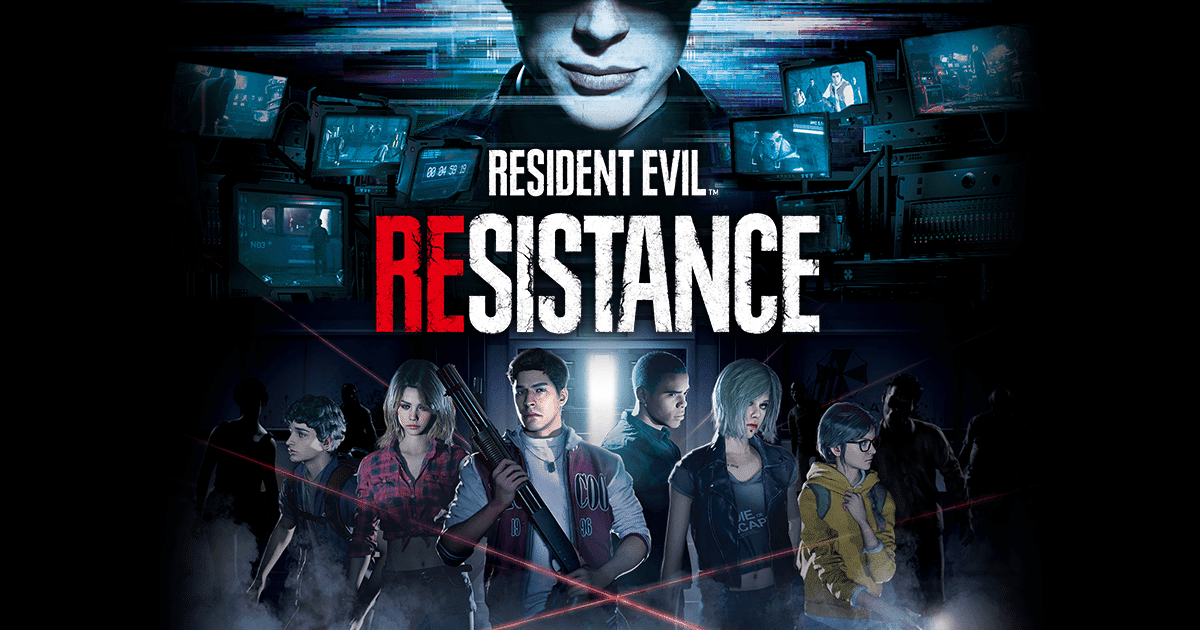What Is Asymmetric Horror?
Asymmetric horror games are multiplayer games that combine the best aspect of traditional horror and asymmetric multiplayer to create an emergent style of competitive gameplay. Most easily described as “humans versus monsters,” asymmetric horror games pit two teams with drastically different abilities against each other. The goal of the human/victim team is often simply to survive. The goal of the monster/killer is to maim, kill, devour, etc. Needless to say, the concept lends itself well to adaptations of horror films.
There are a lot of potential concerns that need to be considered when it comes to asymmetric horror. Is the game well-balanced? Do the visuals and sound create a tense atmosphere? Is it legitimately scary? Being able to answer “yes” to all of these questions can make for an incredibly difficult balancing act for developers. As a result, asymmetric games are often released as “early access” titles on PC so that potential issues can be ironed out before a “final” version is released.
In honor of the spookiest of seasons, I'll be taking a look at some of the finest examples of asymmetric horror games. And while we're at it, why not take a well-meaning look at some misfires as well?
Left 4 Dead

2008's Left 4 Dead was a multiplayer phenomenon. The main draw is ostensibly the handful of cooperative campaigns, but the real standout for many is the “Versus” mode. In Versus mode, four players control human survivors who need to traverse an environment filled with “infected” (zombies), while four players take control of “special infected,” which are essentially zombies with superpowers. Once all survivors are either eliminated or reach a safe house, the teams switch sides and play through the same area before moving on to the next area.
Reaching a safe house as a survivor is an exhilarating feeling, but let's be honest – it's so much more satisfying to incapacitate your friends as a special infected. The “Smoker” can use its tentacles-like tongue to strangle survivors and pull them up walls. The “Hunter” can pin survivors down and rip and tear at them until help arrives. The “Boomer” complains about kids eating avocado toast. Oh, wait – wrong Boomer. L4D‘s Boomer explodes, covering any nearby survivor in a gooey substance that attracts nearby infected. Left 4 Dead 2 (2009) adds even more special infected types, and they are all incredibly fun to play as.
Friday the 13th

My personal favorite asymmetric horror game, Friday the 13th (2017) does an amazing job of making you feel like you're playing one of the movies. Developed by IllFonic, the game puts you in the shoes of one of six unlucky camp counselors who must survive a night of terror at Camp Crystal Lake. On the opposing side, one player takes control of the murderous Jason Voorhees as he hacks, slashes, and teleports his way through the camp in an effort to prevent the counselors from escaping. There are a ridiculous number of homages to the film series, including the iconic “smashing a counselor in a sleeping bed against a tree” kill.
Friday the 13th is undeniably rough around the edges. Sadly, dedicated servers no longer exist, so your potential enjoyment is at the mercy of whoever is designated as “host” of the match. There are also plenty of glitches. Some add to the fun, while others may make the game unplayable. The silver lining is that no two matches are identical, and it's great fun to even just spectate other players as they scramble about looking for items to aid their escape. Moody lighting and tense music straight out of the movies make this one a favorite of fans of horror cinema.
Dead by Daylight

Everyone else's favorite asymmetric horror game, Dead by Daylight is probably the best modern example of the subgenre. Summoned into another realm by a Lovecraftian “Entity,” one killer hunts four survivors to offer as a sacrifice to said Entity. The player controlling the killer attempts to incapacitate the human characters and hang them on designated meat hooks. Human characters can be pulled off the hook by other players. If too much time passes, however, the hanging character is sacrificed to The Entity. The goal of the human characters is to repair four generators that power an exit door and escape. Easier said than done.
The push-and-pull of the gameplay is incredibly addictive by itself, but DbD has plenty more to offer. The game features a fairly comprehensive collection of licensed characters from horror cinema. Everyone from Freddy Krueger to Pinhead is here, and each has a unique set of abilities. Notably absent is Jason Voorhees from Friday the 13th, whose licensing is so notoriously difficult to procure that it is even causing headaches for the publisher of his own aforementioned game.
Forewarned

Asymmetric horror is getting a lot of representation via independent games as well. Dead by Daylight continues to attract a huge amount of attention, but smaller games are looking to move things forward.
Forewarned drops a group of archaeologists into ancient Egyptian ruins where they seek out valuable relics. The layout of the ruins is randomized, with plenty of traps and gold pieces to keep an eye out for. You can use tools such as torches, metal detectors, and flashlights to solve puzzles and collect clues. If you have enough clues to determine which malevolent deity the ruins are dedicated to, you can collect the relic and escape.
That synopsis makes the game sound purely cooperative, right? What sets Forespoken apart from its contemporaries is what happens after you die. Whether you fall into spikes or succumb to Necreph's cold embrace, death isn't the end for your adventurer. Upon dying, you choose to either return to the ruins as a friend or foe. Either way, you return as a mummy, and it's not immediately clear whether you are good or evil. If your teammates didn't pull their weight, you can stalk them and send them to their doom. Or maybe you would rather use your undead powers to help them find hidden treasures. Either way, avoid fire, as it will put an end to your ambitions, whether good or ill.
White Noise 2

White Noise 2 starts out as your typical 4v1 contest, with four human characters trying to gather enough clues to repel a powerful demon. Both sides are human-controlled, and while the demon might seem overpowered, it has some severe handicaps. The demon often relies on sonar-like senses to find human characters while managing the cooldown of a handful of abilities. Grab a human character two or three times as a demon and you'll kill them. However, a dead human character returns as a ghost that can see far-off objects and assist in some actions.
The addition of ghostly support gives White Noise 2 a rather distinct layer of strategy. If playing as a demon, do you immediately try to kill the weakest link, giving the human team a ghostly advantage? Or do you try to spread out your attacks to weaken the group as a whole? It's also nice as a human character to be able to contribute to the team's goals even if killed early in a match.
Misfires

We've talked about the best examples of asymmetric horror games, but what about the rest? The most notable example of a misfire in the sub-genre is 2015's Evolve. Four human characters hunt a monster as it attempts to consume enough local wildlife to evolve and become more powerful. The core game is fun and generally well-balanced, and being able to take out a fully powered-up monster is an exhilarating experience.
Developed by the Left 4 Dead series' own Turtle Rock Studios, Evolve received generally strong reviews and sold well upon release, but some key issues caused the player base to quickly diminish. For one thing, players were immediately turned off by a large amount of paid DLC. The game was full-priced but asked players to pay large sums of money for additional playable characters and maps. There was also a little-to-no penalty for players who would drop if things didn't go completely smoothly early in a match. The general attitude toward the game quickly soured and even a desperate attempt at making the game free-to-play didn't keep it afloat for long.

Games like Resident Evil Resistance and Predator: Hunting Grounds (both 2020 releases) had more fundamental problems – mostly involving team balance. Resistance's randomized elements could make a coordinated group of survivors nearly unstoppable. It could also allow a single opposing mastermind to turn a match into a meat grinder. Predator sadly suffered from an underpowered alien threat who could easily be taken down by a relatively unskilled group of human mercenaries. Neither game was able to gain a notable player base.
Looking Forward
Asymmetric horror games appear to be the mythological hydra of modern gaming. For every one that flickers out or fails to take off, several new games appear to take their place. It's exciting to see the creativity in the sub-genres of indie offerings. Developers' growing understanding of how to properly balance mechanics should lead to some solid new experiences. Take a moment during “spooky season” to try some of these games out. You might just find yourself a new favorite style of game!

